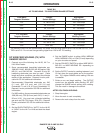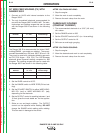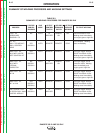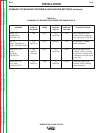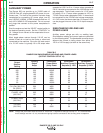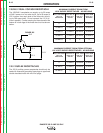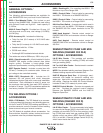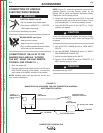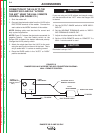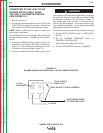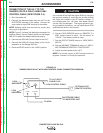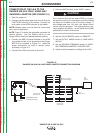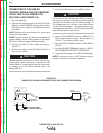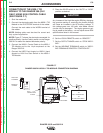
CONNECTION OF LINCOLN
ELECTRIC WIRE FEEDERS
ELECTRIC SHOCK can kill.
• Do not operate with panels open.
• Disconnect NEGATIVE (-) BATTERY
LEAD before servicing.
• Do not touch electrically live parts.
MOVING PARTS can injure.
• Keep guards in place.
• Keep away from moving parts.
• Only qualified personnel should install,
use or service this equipment.
CONNECTION OF THE LN-25 TO THE
RANGER 300 D AND DLX “ACROSS
THE ARC” USING THE K857 REMOTE
CONTROL (SEE FIGURE C.1.)
1. Shut the welder off.
2. Connect the electrode cable from the LN-25 to the
ELECTRODE terminal of the welder. Connect the
work cable to the WORK terminal of the welder.
NOTE: Welding cable must be sized for current and
duty cycle of application.
NOTE: Figure C.1 shows the electrode connected for
negative polarity. Use the Polarity switch on the
Ranger 300 to select the desired electrode polarity.
Change the LN-25 polarity switch.
3. Attach the single lead from the LN-25 to the work
using the spring clip on the end of the lead. This is
only a sense lead - it carries no welding current.
4. Place the IDLER switch in the “AUTO” or “HIGH”
position, as desired.
If you are using an LN-25 without an internal contac-
tor, the electrode will be “HOT” when the Ranger 300
is started.
5. Set the OUTPUT RANGE switch to “WIRE WELD-
ING CV.”
6. Set the WELDING TERMINALS switch to “WELD-
ING TERMINALS ALWAYS ON.”
7. Adjust wire feed speed at the LN-25.
8. Set the LOCAL/REMOTE switch to “REMOTE” if a
K857 remote control is used.
Electrode is always “HOT.”
ACCESSORIES
C-3 C-3
RANGER 300 D AND 300 DLX
Return to Section TOC Return to Section TOC Return to Section TOC Return to Section TOC
Return to Master TOC Return to Master TOC Return to Master TOC Return to Master TOC
WARNING
CAUTION
CAUTION
(RANGER 300 DLX
ONLY)
6 PIN
AMPHENOL
TO WORK
14 PIN
AMPHENOL
LN-25
ELECTRODE CABLE
WIRE FEEDER
TO WORK
WORK CLIP LEAD
OPTIONAL K857
REMOTE CONTROL
ELECTRODE
TO WORK
FIGURE C.1
RANGER 300/LN-25 ACROSS THE ARC CONNECTION DIAGRAM –
K857 REMOTE CONTROL



